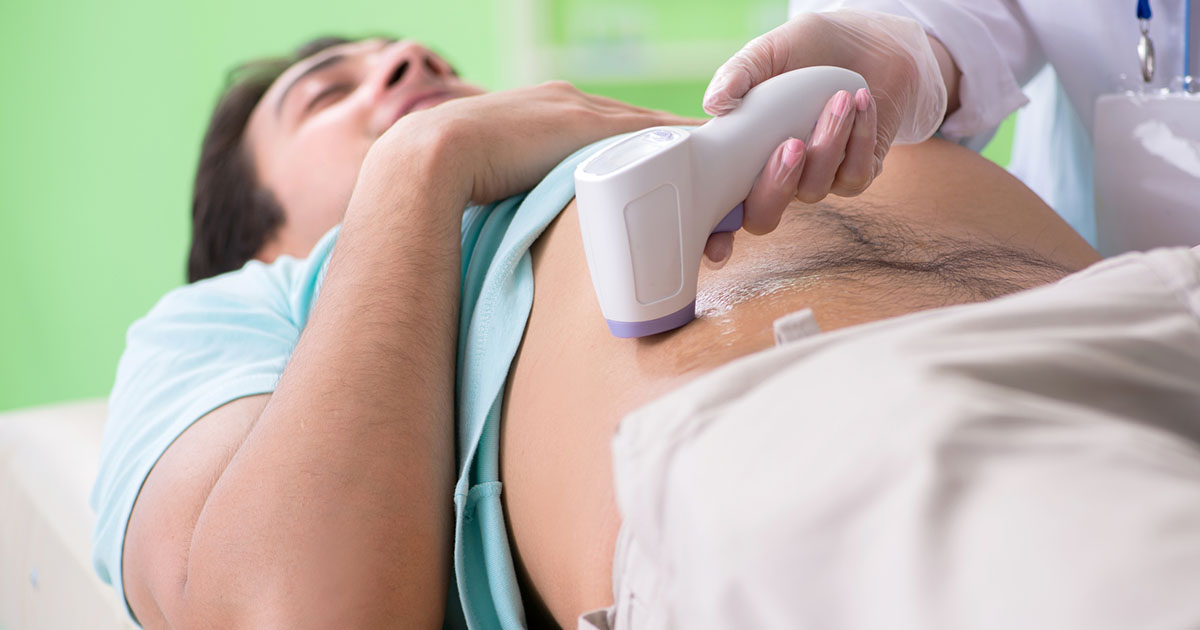Serious Symptoms Of Fatty Liver Disease
Medically known as steatohepatitis, fatty liver disease is a condition in which there is an excessive amount of fat in the liver, the body's largest internal organ. The condition can be caused by alcohol consumption and by other factors such as obesity, elevated blood glucose, and elevated triglycerides. Fatty liver disease affects roughly twenty-five percent of the world's population, and the incidence of the disease is increasing with the current obesity epidemic.
Since fatty liver disease often produces no symptoms in its early stages, patients may only find out they have it after undergoing routine tests for another reason. For example, routine blood tests may show abnormal liver function. Ultrasounds, CT and MRI scans, and elastography tests are generally ordered to detect this condition. While fatty liver disease can't currently be cured, weight loss is the major recommended treatment option. Patients may also be given medication to lower their cholesterol, and doctors might recommend testing for diabetes. Diabetes patients who also have fatty liver disease will need to keep their blood sugar under tight control, and it is especially important to avoid alcohol with fatty liver disease. If left untreated, the condition can cause severe scarring of the liver (cirrhosis) or liver failure, which could necessitate a liver transplant.
The most common symptoms associated with fatty liver disease are outlined below.
Upper Right Abdominal Pain

Patients in both the early and late stages of fatty liver disease typically notice upper right abdominal pain. The liver is located in this area, and the pain often begins as a dull ache that comes and goes. Some patients have described it as a sensation of fullness, and the pain may also radiate to the center of the abdomen. In the later stages of fatty liver disease, the pain becomes more severe, and patients might notice a loss of appetite or vomiting. To assess upper right abdominal pain, doctors will normally begin with a physical examination of the entire abdomen. First, they will listen to the abdomen with a stethoscope to detect bowel sounds, and they might then tap over certain areas. This can be useful in estimating the size of the liver itself. Next, the doctor will press deeply in all quadrants of the abdomen to check for masses, pain, or swelling. Since upper right abdominal pain could indicate several serious conditions, imaging studies are often used to assist in the diagnostic process.
Continue reading to learn about more common symptoms of fatty liver disease now.
Enlarged Liver

An enlarged liver is usually an early indicator of fatty liver disease, and it occurs due to the buildup of fat in this organ. Patients with an enlarged liver might observe enlarged blood vessels just beneath the surface of the skin. A healthy liver is roughly seven centimeters in women and 10.5 centimeters in men. Increases as small as two to three centimeters could indicate an abnormality. To estimate the size of the liver, doctors use percussion (tapping) techniques during a physical exam. These techniques are painless and allow the doctor to listen for changes in sound that indicate the presence of an organ. Exact liver size can be determined with ultrasound, CT, or MRI studies, and patients who have an enlarged liver might need to have these tests repeated regularly to track their progress. Weight loss can sometimes reduce the size of the liver.
Uncover details on more warning signs of fatty liver disease now.
Chronic Fatigue

Both types of fatty liver disease may trigger chronic fatigue. Patients might notice they feel more tired than what is normal for them after regular activities, including household chores. They may feel the need to sleep for longer than they usually do at night, and some patients find they need to take naps for several hours during the day too. Chronic fatigue could severely impact an affected individual's work or school, and it could result in having to take an extended absence. Since chronic fatigue could be a sign of several potentially serious conditions, patients should see their primary care doctor if this symptom worsens or persists for longer than two weeks. Keeping a diary of sleep hours and any daytime naps could provide useful information for medical staff.
Read more about the symptoms linked to fatty liver disease now.
Enlarged Spleen

An enlarged spleen often develops in the later stages of fatty liver disease. Located in the upper left abdominal quadrant, the spleen is normally around five inches long and three inches wide. Females tend to have smaller spleens than males, and taller individuals have longer spleens than shorter people. Although the spleen may not be felt in healthy individuals, doctors can often identify an enlarged spleen in patients who are ill. This process generally begins with a physical examination. The doctor will tap the left side of the abdomen to estimate the size of the spleen, and these estimates can be refined with ultrasounds or other imaging studies. The spleen size may decrease with the treatment of fatty liver disease, and regular ultrasounds can monitor the patient's status. In rare cases, an enlarged spleen might need to be surgically removed.
Continue reading to discover more symptoms of fatty liver disease now.
Jaundice

Patients in the later stages of fatty liver disease may notice jaundice, a yellowing of the skin or eyes. This symptom indicates the liver is not functioning properly and can no longer filter bilirubin (a yellow liquid) effectively. Individuals with jaundice might also experience intense itching of the skin, and they could also develop redness of the palms and abdominal swelling. Since jaundice could be a sign of liver cancer, patients who observe any changes in their skin color should see a doctor if these do not resolve within a week, especially if skin itchiness is also present. The doctor will do a visual inspection of the skin and the whites of the eyes, and blood tests will likely be ordered to assess liver function. While jaundice itself does not require treatment in adult patients, determining and treating the underlying cause of this symptom typically improves symptom management, and some patients might even be able to reverse their jaundice completely.
Uncover more information on the various symptoms linked to fatty liver disease now.
Unexplained Weight Loss

Unexplained weight loss can sometimes be a sign of fatty liver disease. Some estimates indicate up to twenty percent of adults in the United States can have some form of the disease. Between seventy and ninety percent of individuals who are overweight or obese are affected by fatty liver. One of the main treatments prescribed is changes to diet and exercise. However, if individuals notice rapid weight loss that occurs without any significant changes to their diet, it's worth talking to a doctor to find out what's going on. The fat cells around the liver aren't what cause the weight loss. However, if individuals develop insulin resistance, this can lead them to rapidly lose weight because their body is struggling to store sugar where it's supposed to be. This is a classic symptom of diabetes that often shows up in patients who also have a fatty liver.
Keep reading to learn more about the warning signs of fatty liver disease now.
Leg And Abdominal Swelling

Researchers have discovered several different types of fatty liver disease, and not all of them present the same way. This means individuals won't see leg and abdominal swelling with every type of fatty liver disease. However, swelling in the abdomen and legs is often present when there's cirrhosis, which occurs when the liver becomes severely scarred as a result of chronic liver disease. Every injury to the liver causes the liver to attempt to repair itself, resulting in scar tissue. The more scar tissue that forms, the more difficult it is for the liver to function. If patients develop advanced cirrhosis, their liver may fail, which is life-threatening unless they're able to get a liver transplant. When swelling occurs in the ankles, feet, or legs, it's called edema. It is called ascites when fluid accumulates inside the abdomen. Patients might also experience itchy skin, nausea, fatigue, easy bruising or bleeding, yellow discoloration of your eyes and skin, and spiderlike blood vessels in the skin. Redness on the palms also sometimes occurs.
Discover additional indicators linked to fatty liver disease now.
General Malaise

General malaise can occur with multiple kinds of fatty liver disease, though it can also be difficult to categorize. Malaise is the medical term for a general feeling of unwellness. Affected individuals might have trouble explaining why they feel unwell beyond that their body feels like it isn't calibrated correctly. Many patients experiencing malaise also experience nausea, lethargy, and fatigue even after having a good night's sleep. Patients might feel as though they're experiencing digestive problems that don't resolve. Malaise can be one of the most frustrating symptoms to diagnose, because it's very difficult to define and accompanies a wide range of different conditions. When individuals are experiencing consistent and ongoing feelings of unwellness, one of the best things they can do is talk to a doctor in terms as specific as possible about what they're feeling. Some studies indicate fatigue and malaise are the most commonly experienced symptoms of any type of fatty liver disease. Some of this fatigue might be caused by chemical changes in the brain.
Get more details on the warning signs of fatty liver disease now.
Nausea and Vomiting

Nausea and vomiting are some of the most classically observed signs of liver disease. They might occur in individuals who have non-alcoholic fatty liver disease, and they're also common in those whose liver disease is related to alcohol. Sometimes taking large amounts of acetaminophen and other similar drugs can have a damaging effect on the liver. Other diseases, like hepatitis or hemochromatosis, can cause the liver to become damaged over time. When patients experience nausea and vomiting as a result of liver disease, they might not realize they're linked to the liver at first. Thus, patients might not see their doctor about the symptoms until they've lasted for quite a long time. However, it's important to get liver disease diagnosed and treated early to prevent irreparable damage to the liver. When the vomiting and nausea are related to the liver, patients will also often experience jaundice, weight loss, and generalized fatigue. The treatment will vary depending on what type of fatty liver disease a patient has.
Read more about fatty liver disease symptoms now.
Confusion And Difficulty Focusing

Patients with fatty liver disease may also find themselves dealing with confusion and difficulty focusing. When individuals are feeling fatigued, there's often a sense of fogginess that comes along with it, but the difficulty focusing can also become even more serious. Severe confusion is a neurological symptom, and it can be a key warning sign of cirrhosis. Cirrhosis occurs after chronic liver disease has caused the liver to become permanently scarred. Advanced cirrhosis can lead to liver failure. Since the human body can't function without the liver, this condition can be life-threatening unless patients get a liver transplant. In addition to the difficulty focusing and confusion, many patients experiencing cirrhosis might be unusually drowsy and have slurred speech. They may appear outwardly as though they're drunk even if they haven't had any alcohol. This is a condition called hepatic encephalopathy, and it occurs when a patient's brain function declines because of severe, progressive liver disease. In this case, the liver isn't removing toxins adequately from the blood, which leads toxins to build up in the bloodstream.